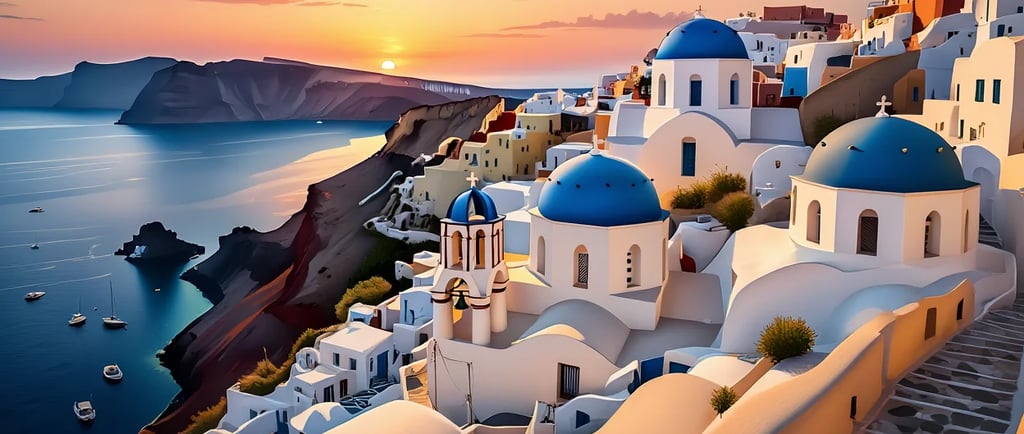Santorini, Greece: A Sun-Soaked Guide to the Cliffside Jewel of the Cyclades
ISLANDGREECEEUROPEBEACHESHONEYMOONVILLAGES & TOWNSARCHITECTUREECHOES OF ELSEWHERE


Let’s be honest — Santorini isn’t just on your bucket list, it is the bucket. This sun-drenched Greek island, perched precariously atop a half-submerged volcanic caldera, has become the poster child for dream holidays, honeymoon goals, and that unmistakable blue-and-white aesthetic plastered across travel feeds. But there’s more to Santorini than Instagram reveals — and if you’re planning a trip to this Aegean wonder, you’ll want to go beyond the clichés.
Oia or Nowhere?
Oia (pronounced ee-ah) is the headline act — a cliff-hugging village where sunset views regularly trigger standing ovations. It's also where you'll find Santorini’s iconic whitewashed buildings, azure domes, and a sea that looks Photoshopped. While undeniably stunning, it can get rather, shall we say, popular — especially during the golden hour when every tourist on the island seems to teleport to one narrow viewpoint. If you want that money shot without elbow-jousting, opt for a sunset dinner at one of Oia’s rooftop restaurants like Kastro or Ambrosia, where the only thing competing for your attention is the baklava.
Beyond the Blue Domes
Santorini is more than just a pretty face. Dig a little deeper — quite literally — and you’ll find Akrotiri, an ancient Minoan city preserved in volcanic ash (think Greek Pompeii, but less doom and more room). Wine lovers, take note: the island's volcanic soil produces some of Greece’s most distinctive wines. Don’t leave without sampling Assyrtiko, a crisp white varietal that pairs beautifully with fresh seafood and sweeping caldera views. Top vineyards include Santo Wines and Venetsanos Winery, both offering tastings with a side of jaw-dropping scenery.
Beach, Please
Now, let’s talk beaches. You won’t find white sand here — blame the volcano — but Santorini’s otherworldly coastline makes up for it. Red Beach, near Akrotiri, is a geological marvel, its rust-coloured cliffs a dramatic contrast to the aquamarine sea. Over in Kamari and Perissa, you’ll find black sand beaches, beach bars, and sun loungers galore. Don’t forget flip-flops: volcanic sand has the thermal properties of a stovetop in August.
How to Get Around
Public transport exists, but if you value flexibility (or air conditioning), hire a car or a quad bike — just remember, Greek roads aren’t for the faint-hearted. Santorini’s villages are strung together like pearls, and each has its own charm. Fira, the island’s capital, is buzzing with shops and nightlife; Pyrgos is a sleepy hilltop village with panoramic views and a fraction of the crowds.
When to Go
Peak season (June–August) is lively but busy and pricey. Shoulder seasons — late April to early June or September to mid-October — offer better value, pleasant weather, and fewer selfie sticks per square metre. Winter travel is becoming a quiet trend for those seeking solitude and cheaper stays, although some places do close for the season.
Whether you're a hopeless romantic, a history buff, or a wine-sipping sun worshipper, Santorini delivers the goods — and then some. Just be sure to pack sunscreen, a camera, and an appetite for both adventure and feta. Opa!




